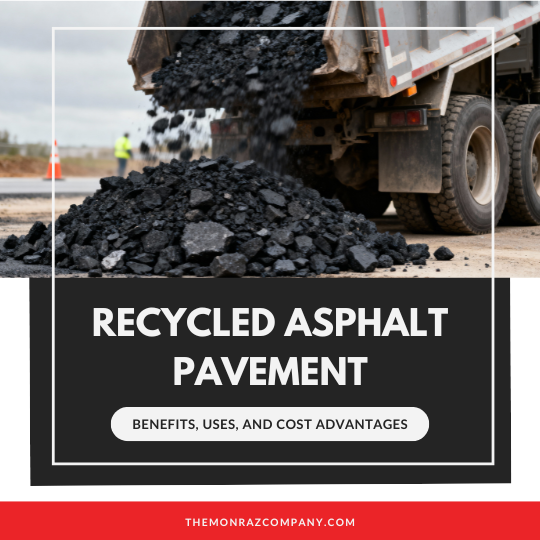What Are the Causes of Potholes in Roads and Parking Lots?
Traffic safety comes down to a few essential elements. Factors like driver behavior and current weather play a role, but the condition of the roads is just as important. One of the most common hazards drivers face is potholes.
These road imperfections can appear unexpectedly, often catching drivers off guard. And, all types of well-traveled roadways and parking lots are susceptible to them, including concrete, asphalt, and gravel.
Potholes aren’t just an inconvenience—they can cause damage to vehicles and create hazardous driving conditions. Even small potholes can lead to costly repairs or accidents if ignored. That’s why regular maintenance and prompt repairs are so important. In this post, we’ll explain pothole formation, pothole prevention, and pothole reporting.
For pothole repair in Southern California, trust the professionals at TMC Engineering. Our experienced team can assist both pothole repair and prevention. Most importantly, expert insight will identify the underlying issues and provide a reliable repair plan designed to save you time and money.
Call TMC Engineering today for a quote on your commercial construction project!

What Are the Causes of Potholes in Roads and Parking Lots?
When it comes to gravel, concrete, and asphalt pavement, maintenance is rarely about aesthetics alone. Keeping the paved surfaces of your commercial or industrial properties in top condition ensures that your parking lot or roadway is functional, reliable, and safe.
In this comprehensive guide, we’ll thoroughly explain
why it’s
important to look out for potholes. Additionally, we will explore what you need to know about these surface imperfections as a property owner:
What Is a Pothole?
A pothole is a depression in a paved surface, such as a roadway or parking lot. It usually has rough, vertical sides and can be deep enough to cause vehicle damage or even accidents.
How Do Potholes Form?
Potholes form when water seeps into cracks in asphalt, concrete, or gravel surfaces. This gradually weakens the pavement, reducing its ability to handle the repeated stress of traffic. Over time, the surface breaks apart, forming potholes. These depressions can range from small dips to large, hazardous holes.
However, it isn’t always this straightforward. Understanding the underlying causes behind the formation of potholes can help save money and prevent costly repairs. Below are several key factors that can contribute to pothole development:

What Causes Potholes?
Water Infiltration
When cracks are present, moisture can penetrate asphalt, concrete, or gravel surfaces. Water seeps in and saturates the base or subgrade beneath, weakening the pavement. Without support from the lower layers, the surface becomes unstable and eventually collapses, forming potholes.
Freeze-Thaw Cycles
Water infiltration is even more damaging when temperatures drop below freezing. As water freezes in frigid weather conditions, it expands, putting significant pressure on the surrounding pavement. When the surface then thaws and contracts, it leaves gaps and further compromises the structure. Over time, repeated freeze and thaw cycles stress the pavement, allowing cracks to expand and eventually turn into potholes.
To learn more, visit our post: “Best Weather for Asphalt Paving.”
Heavy Traffic
Pavement can deteriorate under the constant weight of traffic, particularly from heavy trucks or overweight vehicles. When combined with water infiltration, even well-constructed roadways can become compromised. On roads that experience such high traffic volumes, pothole formation is inevitable.
Poor Drainage
Standing water caused by inadequate drainage softens the subgrade and undermines the pavement. Pooled water can also seep into existing cracks, degrading the surfaces from the inside. Over time, these poorly drained areas are more likely to collapse under traffic, leading to potholes and further damage.
Thin or Weak Pavement Layers
Improper installation or substandard materials increase the risk of early deterioration of paved surfaces. Additionally, thin gravel, concrete, or asphalt layers don’t provide sufficient support and can crack or fail under traffic. These flaws are leading causes of potholes.
Aging Materials
Ultimately, every pavement application has a limited lifespan. Over time, asphalt and concrete become brittle due to oxidation and exposure to UV light. Furthermore, gravel surfaces lose aggregate as it washes away or shifts. On all types of pavement, aging materials make the lot or roadway more prone to cracking and pothole formation.
For more information, visit “Exposed Aggregate Concrete: A Complete Guide.”
Improper Construction
Mistakes during pavement installation form weak spots where potholes are likely to develop. Using poor-quality materials, failing to compact the base properly, layering incorrectly, or preparing the subgrade inadequately can all compromise pavement strength and accelerate deterioration.
Utility Cuts or Patches
Pavement is sometimes cut to allow for the installation of utilities or site infrastructure. These modifications disrupt the original structure and create vulnerabilities. If patches aren’t applied correctly or compacted fully, the edges of the repair can break down faster, eventually forming potholes.
We discuss this concept further in “Asphalt Cold Patch: The Ultimate Guide to Quick Pothole Repairs” and “How to Patch Holes in Concrete.”
Soil Movement
The soil beneath the pavement provides critical support. Shifting or unstable soil can create voids or uneven settlement, weakening the pavement above. Combined with water infiltration and traffic stress, these conditions often result in cracks that grow into potholes over time.
Lack of Maintenance
Neglecting routine maintenance is a major contributor to potholes. Small cracks, minor surface damage, and early wear left unaddressed can worsen quickly. Without timely repairs, the pavement loses strength. The result is a shortened lifespan and increased likelihood of potholes forming.
For more information, here’s a dedicated guide to
what causes potholes on the road.

How to Avoid Potholes as a Property Owner
Seal Cracks Promptly
Moisture is the leading cause of potholes. Prevent water from seeping into the pavement by sealing cracks as soon as they appear. Use a suitable sealant for your surface type (whether asphalt, concrete, or gravel) and inspect regularly to catch new cracks early.
For more, visit the following posts:
- Parking Lot Sealing and Striping
- How to Maintain Your Parking Lot Through Seal Coating
- Sealer for Concrete: What Are the Best Sealers for Different Concrete Surfaces?
Fix Drainage Issues Above and Below the Surface
Drainage problems can occur both on and beneath the pavement. To ensure longevity of your pavement, confirm that surface water flows away properly. If necessary, improve subgrade drainage by stabilizing the soil or installing drainage pipes.
Schedule Regular Inspections
While large cracks or standing water are easy to spot, a professional contractor can identify hidden weaknesses before they become major issues. Regular professional inspections help you stay ahead of expensive repairs.
Limit Heavy Loads on Weak Pavement
If some parts of your property have more fragile pavement than others, you can slow deterioration by restricting heavy trucks and equipment from entering those areas. Reinforce high-traffic zones with additional base material or stronger surfacing.
Restore Aging Pavement with Asphalt or Seal Coating
All pavement breaks down over time. For asphalt, apply seal coating or overlay to prevent oxidation and water damage. For concrete, consider resurfacing or applying a protective sealer. And, for gravel, replenish aggregate and regrade regularly to maintain stability.
For further information, review our post, “Asphalt Overlay: What It Is & Why You Would Need It.”
Use Quality Materials and Skilled Contractors
When installing or repairing pavement, work with experienced contractors like those at TMC Engineering. They’ll use high-quality materials and proven installation and compaction techniques to ensure long-lasting, durable results.
How to Report Potholes on Pubic Roadways
If you find a pothole on your property, the repair is your responsibility. However, potholes on public road surfaces must be handled by the city or local municipality. For safety reasons, it’s important to report these issues as soon as possible. Here’s how to do that:
- Step 1: Identify the location and note the street, nearest cross streets, and any landmarks that would be helpful for contractors.
- Step 2: Take photos of the pothole. Capture the size, depth, and condition of the depression.
- Step 3: Find local reporting forms or channels. Generally, they’re available on city apps, online forms, or public hotlines.
- Step 4: Submit a report on the approved platform. Include your contact information and plenty of details and photos.
- Step 5: Follow up with your report. Most municipalities allow you to track the status of your report.
- Step 6: If the pothole is particularly dangerous, warn others of the depression using hazard markers.
Potholes can damage property and increase the risk of injury accidents.
Potholes may begin as minor surface damage. However, without attention, they quickly grow into larger and more costly problems. They’re often the result of underlying issues like poor drainage, water infiltration, freeze-thaw cycles, or weak pavement layers—all are easy fixes if caught in time. Regular inspections and timely maintenance help prevent small flaws from turning into major repairs.
For dependable
pothole restoration and prevention in Southern California, trust TMC Engineering. Our experienced team doesn’t just patch the surface—we identify and resolve the underlying causes to help prevent potholes from returning. Protect your investment and your reputation by partnering with the experts who know pavement inside and out.
Contact TMC Engineering today to get started.
If you’re a property owner considering fixing the issue yourself, here’s our
guide to DIY parking lot pothole repair and
how to repair potholes in gravel surfaces.




